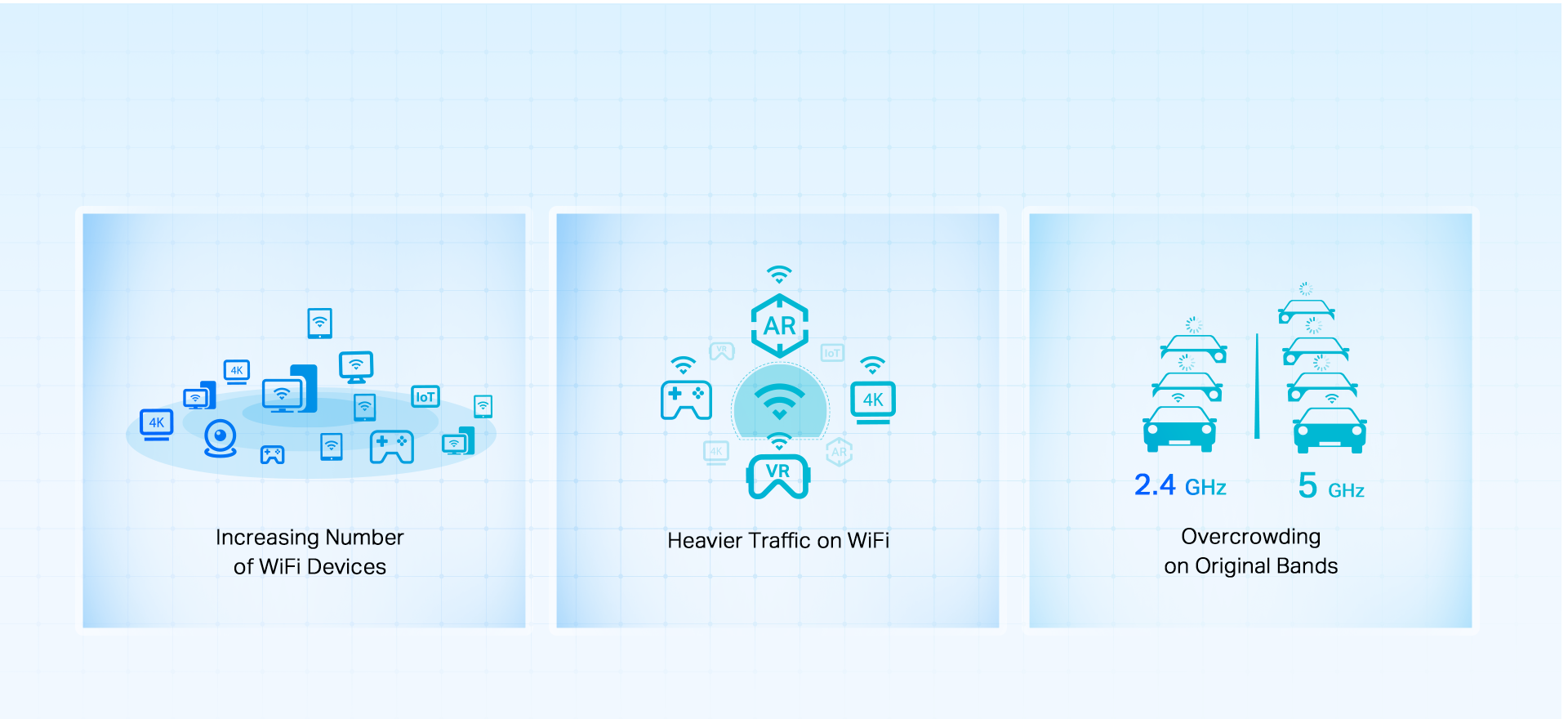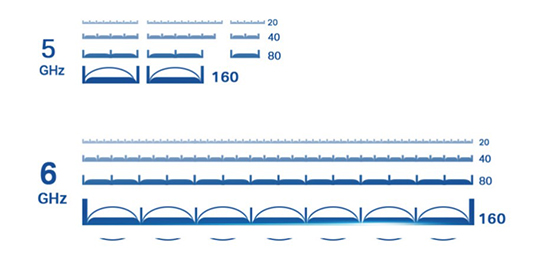What is WiFi 6E? Here’s everything you need to know
What exactly is WiFi 6E? And how is it different from WiFi 6? There’s hardly been enough time to get more than a vague impression of WiFi 6, which was the new WiFi standard that would lead to better WiFi performance. But now there’s “WiFi 6” with an “E” at the end. So what’s up with that?

In this post, we’ll unravel these technical terms and explain how they’ll benefit our online experiences.
- What Is WiFi 6E?
- What’s the Difference Between WiFi 6E and WiFi 6?
- Why Do We Need WiFi 6E?
- WiFi 6E Capabilities
- How Will WiFi 6E Influence Daily Life?
What Is WiFi 6E?
Simply put, WiFi 6E means WiFi 6 extended to the 6 GHz band. WiFi 6E works with the same standard as WiFi 6 but with an extended spectrum.
6 GHz is the new frequency band ranging from 5.925 GHz to 7.125 GHz, allowing up to 1,200 MHz of additional spectrum. Unlike the existing bands on which channels are currently crammed into the limited spectrum, the 6 GHz band exists without overlap or interference.
Earlier in 2020, the FCC (The United States Federal Communications Commission) announced the availability of 6 GHz frequency band for unlicensed spectrum use. Since then, an additional efficient band with greater capacity was open for operation, leading to significant benefits both to users and even the global economy.

What’s the Difference Between WiFi 6E and WiFi 6?
Wi-Fi 6E offers all the same features and capabilities of Wi-Fi 6—including higher performance, lower latency, and faster data rates. In fact, WiFi 6E is identical to WiFi 6 other than one key difference: the additional 6 GHz band.
Opening the 6 GHz band changes the game for WiFi 6. WiFi 6 brings about upgraded performance in network efficiency and capacity. Whereas the advantages of WiFi 6 are not fully realized while competing with WiFi 5 transmissions (or other radios). The 6 GHz band is available only for WiFi 6 traffic, allowing WiFi 6 to meet its intended potential.

Why Do We Need WiFi 6E?
The number of WiFi devices has risen drastically in the past few years, and it’s predicted that there will be nearly 100 billion internet connections around the world by 2025. Also, high-demanding devices and applications like 8K videos and VR/AR games will become more ubiquitous—all while competing over limited signals. The widely available 2.4 GHz and 5 GHz bands with lower barriers of entry are now too crowded for such increasing traffic. And the overlapping channels on them cause even serious congestion for your connections. Thus, the highly efficient WiFi 6 together with a broad and clear band is needed to tackle dense usage, more devices, and increased data traffic.

WiFi 6E Capabilities
Due to its similar characteristics and proximity to the 5 GHz band, where WiFi already operates, 6 GHz brings additional spectrum capacity, provides contiguous spectrum blocks to accommodate 14 additional 80 MHz channels or 7 additional 160 MHz wide channels, and less congested spectrum away from legacy WiFi 4 or WiFi 5 devices.
Minimized Congestion with Greenfield Spectrum
Unlike the crowded 2.4 GHz and 5 GHz bands, the wide-open 6 GHz spectrum is occupied only by efficient WiFi 6E connections, removing frustrations currently caused by so many devices on WiFi networks. Channels on the newly opened 6 GHz band also won’t overlap with each other, greatly reducing network congestion.

Wider Lanes for Faster Speeds
WiFi 6E allows for 7 additional 160 MHz channels that double bandwidth and throughput, enabling many more simultaneous transmissions at the highest possible speeds. This translates to users enjoying 8K movies, AR/VR gaming, and large file downloads—all without buffering.

Improved Capacity with More Spectrum
WiFi 6E offers up to 1,200 MHz of additional spectrum for 6 GHz WiFi, fulfilling the needs of ever-increasing WiFi usage. The 1.2 GHz of contiguous spectrum more than doubles the number of pathways currently available for sending and receiving data, dramatically increasing network capacity while reducing congestion.

How Will WiFi 6E Influence Daily Life
WiFi 6E utilizes the capabilities of 6 GHz to enable high-bandwidth applications that require faster data throughput such as high-definition video streaming and virtual reality, as well as lower latency connectivity for online gaming applications.

Now that you know a thing or two about WiFi 6E, keep your eyes peeled for all the latest updates. You don’t want to miss out on getting the best out of the latest generation of WiFi.


